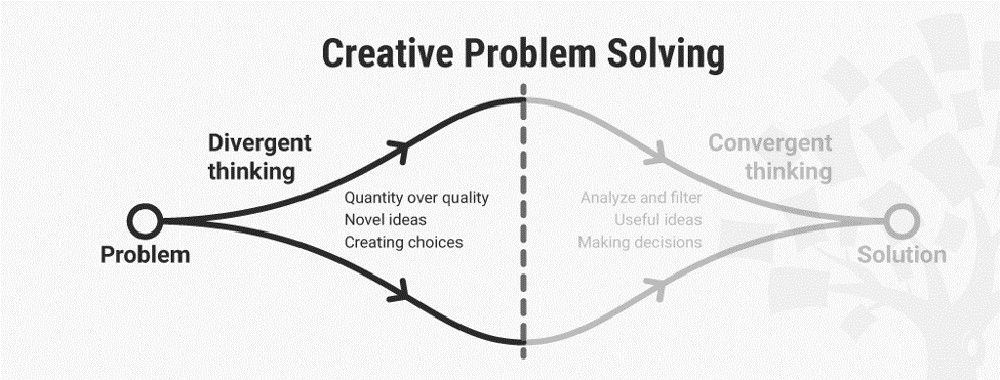Show
Hide
video transcript
- Transcript loading…
We can all become stuck when we need to think divergently and come up with lots of new and fresh ideas. Maybe you know your area so well that it’s hard to see it from a new perspective, or maybe ideation doesn’t come naturally to you. In this video, you’ll learn four methods that will allow you to excel as a divergent thinker and come up with new and creative ideas.
Download the 4 Templates with a Step-by-Step Description of the Methods
Download our templates with a step-by-step description of how to use each of the divergent thinking ideation methods in your own work:
1. Oxymorons
With this method, you explore what happens when you remove what’s most essential about a product or concept (e.g., a service) to generate new ideas for the product or concept.
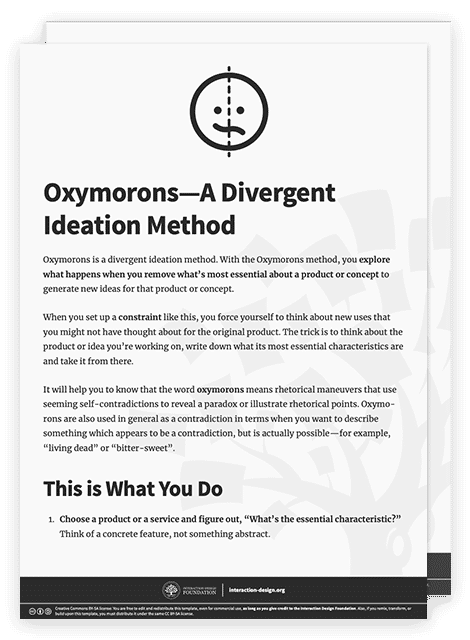

2. Random Metaphor
This method pushes you to think about your project in new ways, so it’s great when you want to think more broadly about the idea or product you’re working on.
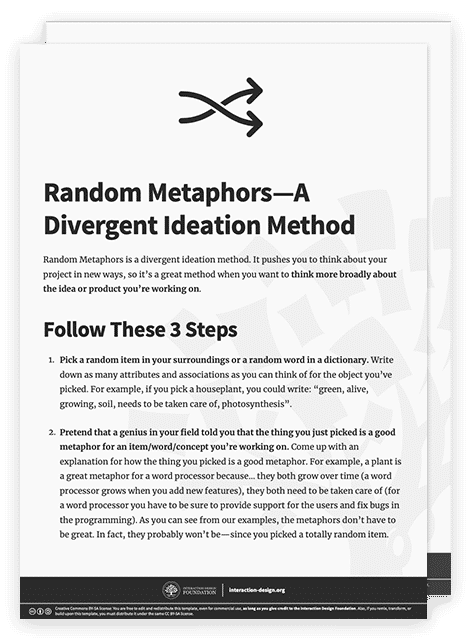

3. Brilliant Designer of Awful Things
You can use the method when you work to improve a design or product that has one or more known problems. The method helps you see the positive sides of the problem to ensure that you fully understand it before you make changes to a design and to help you ideate about ways to improve the product beyond just fixing what is wrong with it.
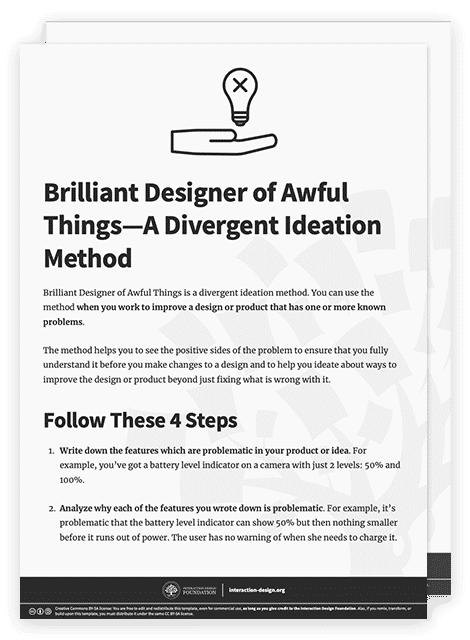

4. Arbitrary Constraints
Thisis a great method to inspire ideation and think outside of the box, because you push yourself to think about the idea or product you’re working on in new ways when you place arbitrary constraints on your ideation.
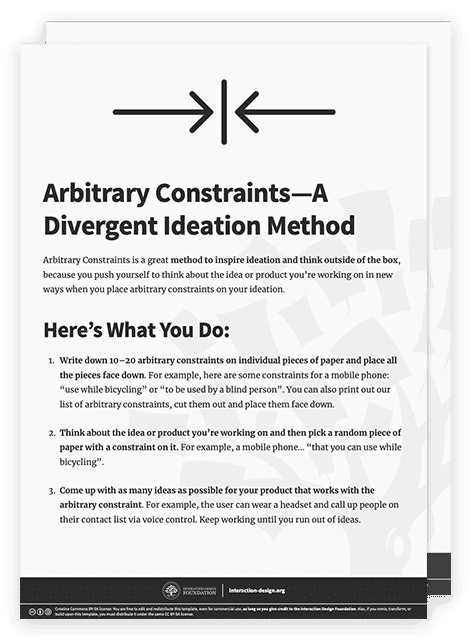

Three Phases and Modes of Thinking in Ideation
Let’s create an overview of the various modes of thinking in ideation and in creativity. Even though we break them up here to grasp them, it’s important to note that these thinking modes work together. In fact, they are deeply dependent on each other.
A) Divergent Thinking
You use the divergent thinking mode in the early stages of your creative ideation sessions. At this stage, it’s important that you get lots of new ideas. You broaden up your design space,and you should envision your possibilities as endless. Your thinking will often start from a single point of focus, and then you’ll expand further and further as you create new and unique ideas. This divergent phase is a time for disruptive and lateral thinking. Divergent thinking is a generative cognitive activity, where the quantity of ideas is more important than the quality.
B) Emergent Thinking
Emergent thinking is an in-between thinking style which leverages ideas generated in the early divergent stage as stimuli to allow the generation of additional ideas. It’s a phase where you and the rest of the ideation group build upon initial ideas to make new connections and combine and spark new ideas. The early, more chaotic divergent sessions should provide a wide enough range of stimuli to make this possible—and, again, disruptive lateral thinking should be utilized.
C) Convergent Thinking
Convergent thinking occurs towards the end of ideation sessions and closes off these sessions through allowing your team to sift through ideas, group them into themes, pick out common threads and ultimately decide upon winners and losers. In this sense, it’s good to remember that ideation is not meant to be a wild frenzy of chaos. Impractical or impossible solutions do need to be weeded out, and the overly ambitious ones need to be shelved for later consideration in certain cases. This convergent phase is therefore where you make decisions through the lenses of desirability, viability and feasibility. Your creative process shouldn’t end with these decisions, though—this is merely the first time you will prune and prepare your best ideas ahead of the rest of your creative process: Let’s say you’re creating a new app. In this case, you would of course want to prototype and test it and not leave it at this ideation stage.
Convergent thinking relies on a more vertical, linear and analytical style of thinking, though using it means you all still need to maintain a good degree of creativity to ensure ideas with merit are not rejected merely because they do not follow logical norms.
